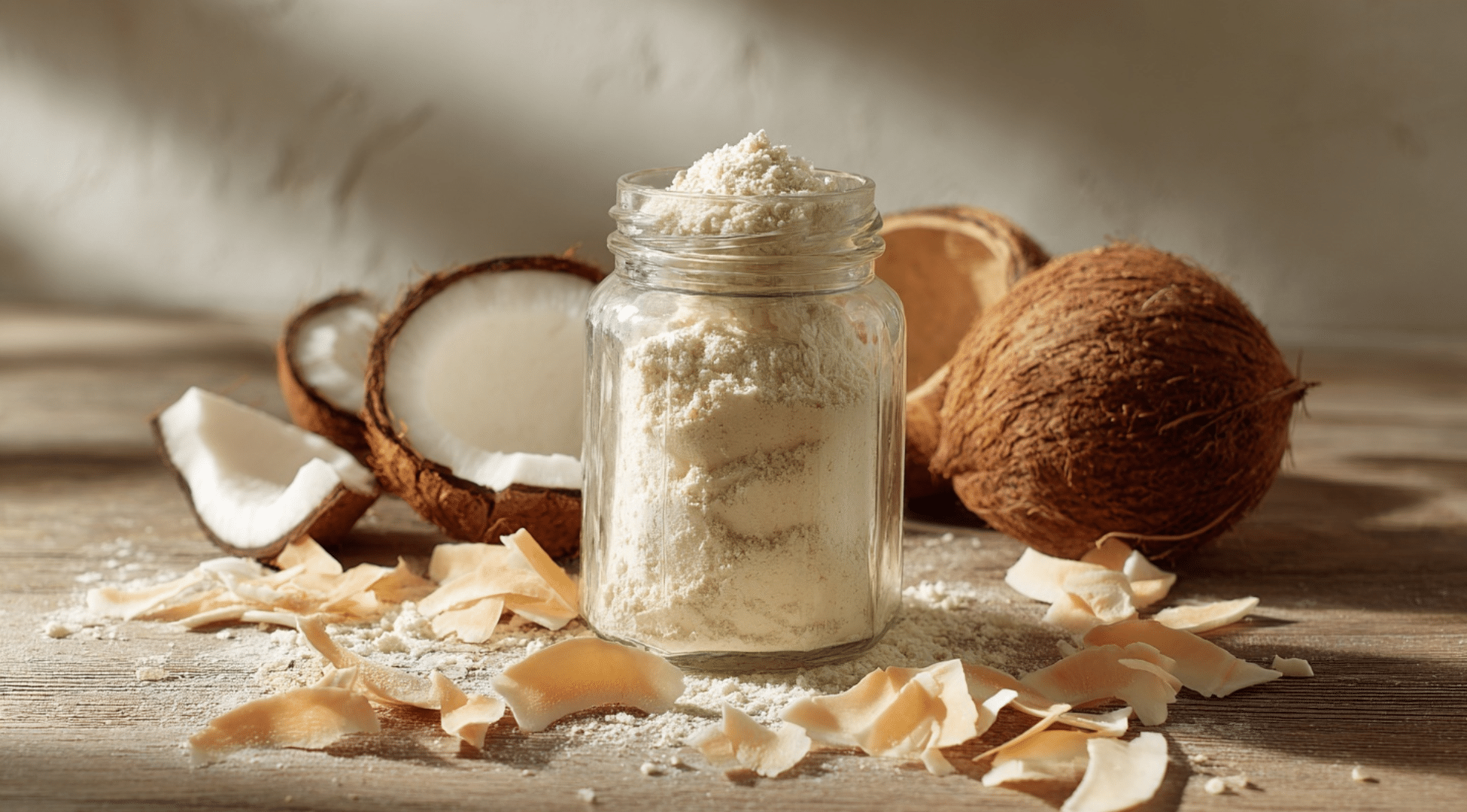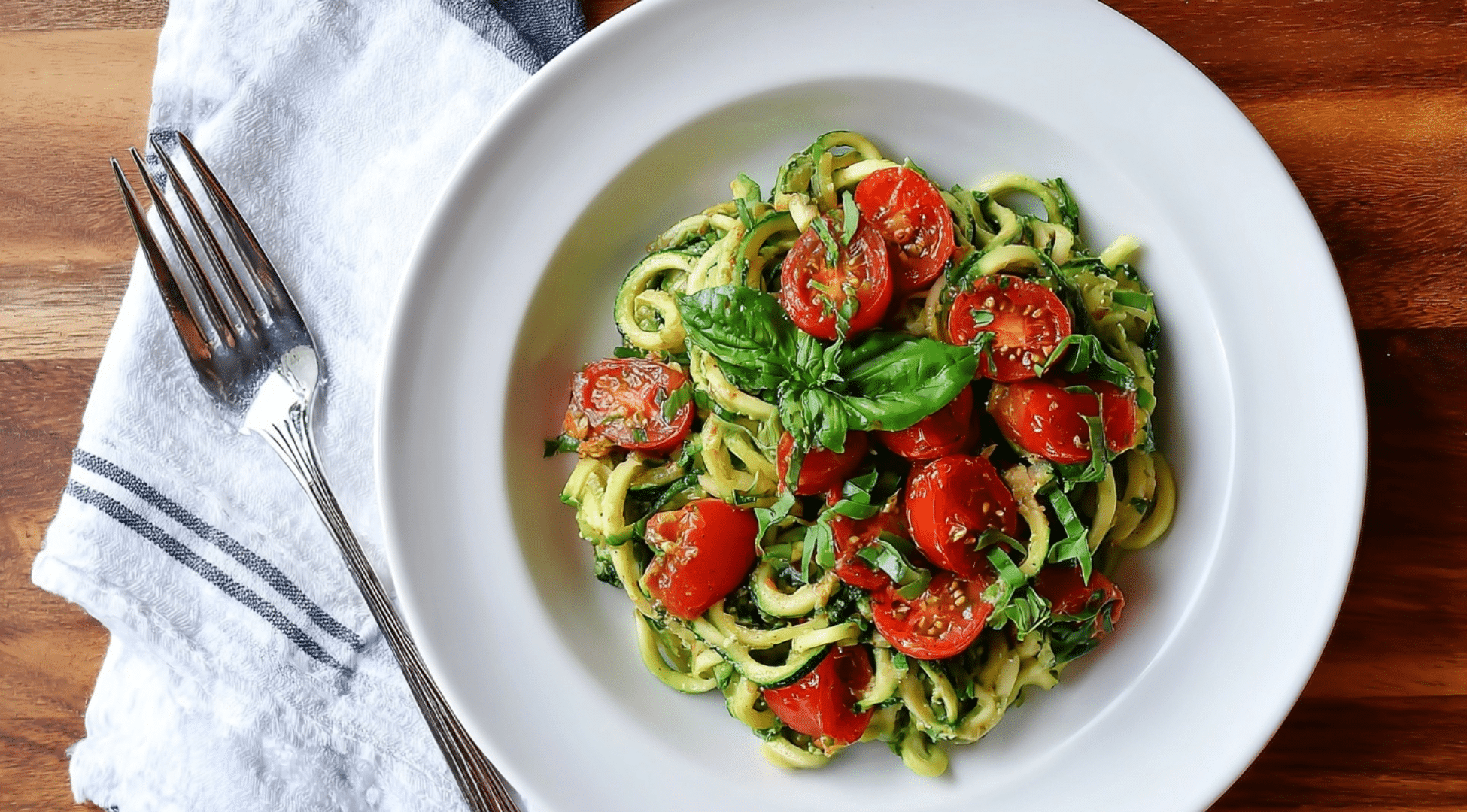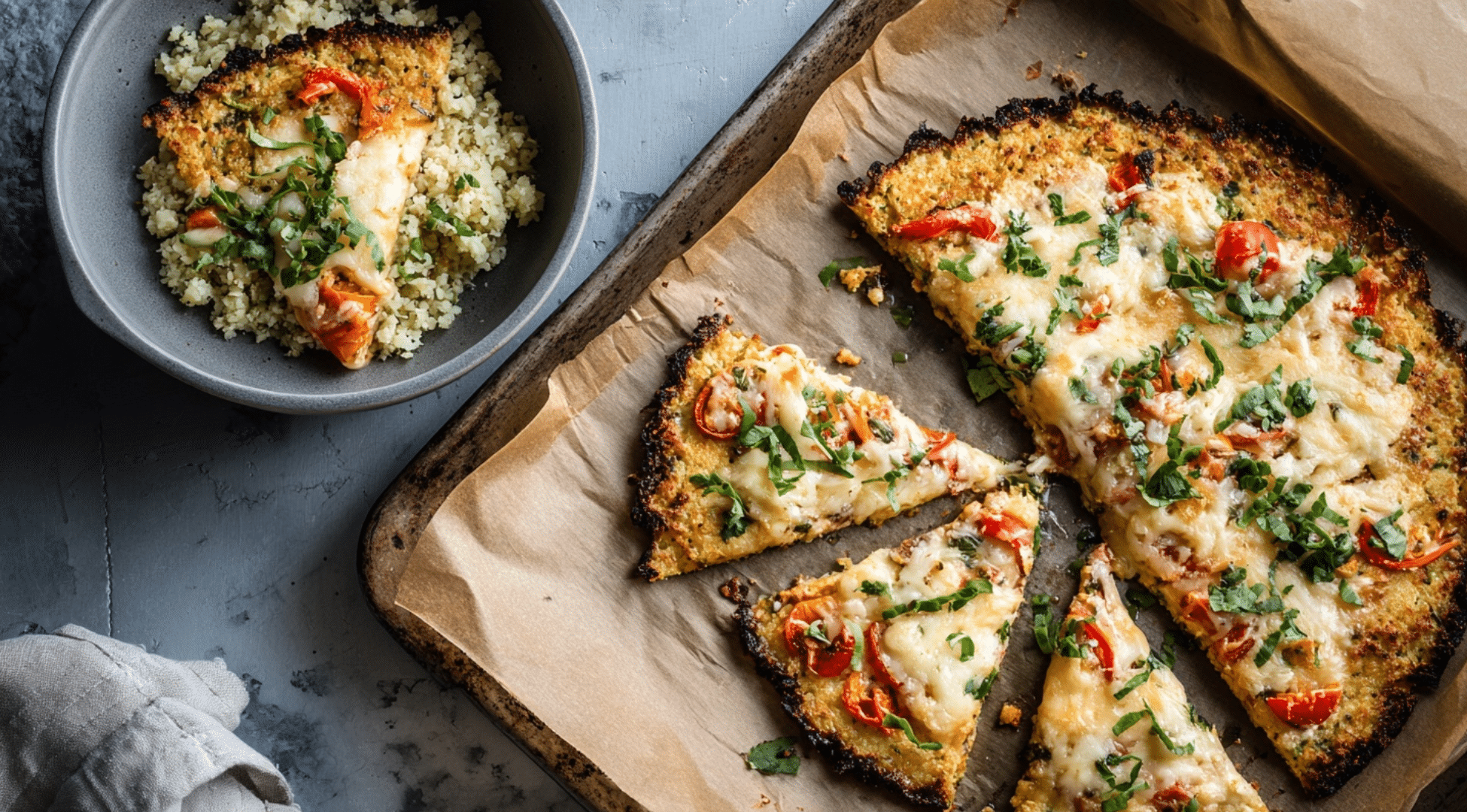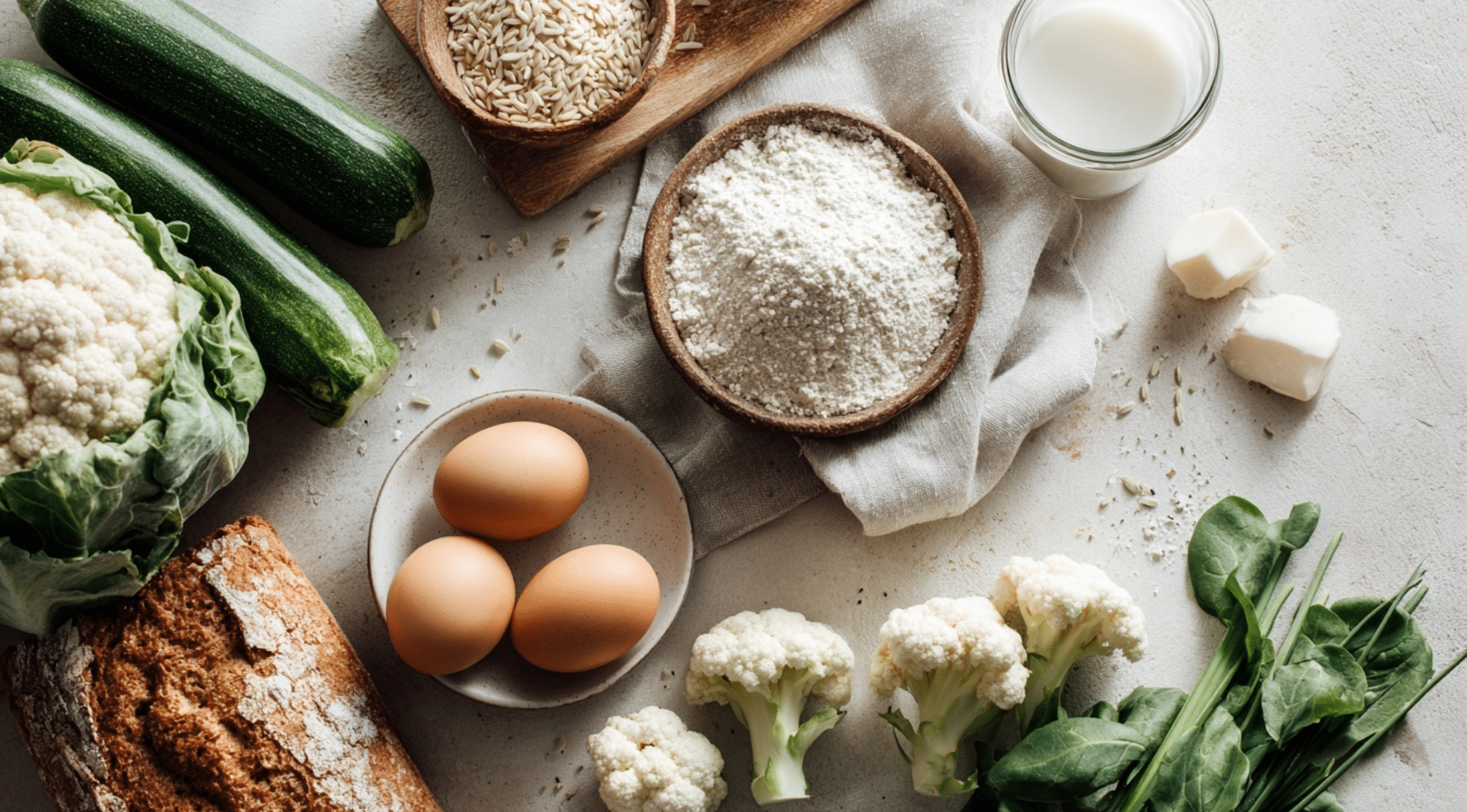I used to ask myself, “Does gluten-free mean no carbs?” It felt like one of those food rules everyone talks about but no one really explains. If you’ve been thinking the same thing, you’re not the only one. It’s easy to mix them up.
Gluten is a protein. Carbs are a type of nutrient. They’re not the same, and one doesn’t cancel out the other.
Here, you’ll see why the answer to whether gluten-free means no carbs is no, and how that affects what you eat. This will help you feel more sure when picking out food, especially if you’re trying to eat gluten-free or just learning what’s in your meals.
Does Gluten Free Mean No Carbs?
The short answer is no; gluten-free does not mean no carbs. Gluten is a protein found in wheat, barley, and rye. Carbohydrates are nutrients found in many foods, such as fruits, vegetables, rice, beans, and potatoes. So, even if a food is gluten-free, it can still be high in carbs.
For example, gluten-free bread or cookies are often made with rice flour or potato starch. These ingredients don’t have gluten, but they do have carbs. Some people avoid gluten because of health reasons, like celiac disease.
Others may avoid it for dietary reasons. But cutting gluten doesn’t automatically mean cutting carbs.
It’s easy to get confused because of how products are marketed. Many people assume gluten-free means low-carb or healthier, but that’s not always the case.
If you’re trying to lower your carb intake, you’ll need to check the full ingredient list, not just the gluten label.
Is Gluten-Free Low Carb?
A lot of people mix up gluten-free with low-carb because of how food is talked about in the media. Ads and labels often make it seem like “gluten-free” means healthier or better for weight loss. This isn’t always true, but it sticks in people’s minds.
Gluten-free foods became more popular in weight loss spaces, even though many of them still have plenty of carbs. That adds to the mix-up.
Celebrities and influencers also play a part. When they share their diets, many mention cutting out gluten and losing weight. This leads others to think gluten is the problem, not carbs.
Over time, all this talk blurs the line between the two, making it easy to confuse them.
Gluten-Free vs. Low-Carb: What’s the Difference?
Gluten is a protein found in grains like wheat, barley, and rye. It helps bread dough stretch and gives it a chewy feel. Some people need to avoid gluten because of allergies or conditions like celiac disease.
Carbohydrates are a type of nutrient your body uses for energy. They include sugar, starch, and fiber. Carbs are found in many foods like bread, rice, fruit, pasta, and even vegetables.
People often mix them up because both terms show up in health diets, weight loss plans, and food marketing. But they’re not the same thing.
Here’s a quick breakdown:
| Gluten-Free | Low-Carb |
|---|---|
| Avoids gluten (a protein) | Limits carbohydrates (sugar, starch, fiber) |
| For people with gluten issues | Often used for weight loss or blood sugar control |
| It can still be high in carbs | May include gluten unless avoided for other reasons |
| Found in special grains like rice, corn, oats (if labeled GF) | Focuses on foods like meat, eggs, cheese, and low-carb veggies |
As you can see, a food can be gluten-free and still have carbs, or be low-carb and still have gluten. It all depends on the ingredients.
Best Substitutes for Gluten and Carbs
1. Almond Flour

Almond flour is made from finely ground almonds, making it naturally gluten-free and low in carbohydrates. It’s ideal for baking cookies, pancakes, or even homemade bread.
The texture is soft with a mild, nutty flavor that adds richness to recipes. Because almond flour is denser than regular flour, you may need to adjust the amount or add extra leavening agents to achieve the right consistency in your baked goods.
2. Coconut Flour

Coconut flour is produced from dried coconut meat and is packed with fiber while being very low in carbohydrates. It is perfect for baking muffins, cakes, or using as a crispy coating for fried foods.
Since coconut flour absorbs a lot of moisture, recipes often require additional eggs or liquids to prevent dryness, keeping your meals moist and flavorful. It also lends a subtle coconut taste that refines many dishes.
3. Flax Meal

Flax meal, made from ground flaxseeds, is a great gluten-free and low-carb option rich in fiber. It works well for baking recipes or adding nutritional boosts to smoothies.
Flax meal is also an excellent egg substitute: simply mix it with water and allow it to thicken, making it perfect for vegan or allergen-friendly recipes. It has a mild, nutty flavor that blends well without overpowering other ingredients.
4. Spiralized Veggies

Spiralized vegetables like zucchini, carrots, or cucumber offer a fresh, nutritious alternative to traditional pasta. These veggie noodles are low in carbs but still deliver a satisfying texture and mouthfeel.
You can eat them raw in salads or sauté them lightly for a warm dish. Serving spiralized veggies with your favorite sauces helps you enjoy pasta-like meals while reducing carbs and boosting your vitamin intake.
5. Cauliflower Rice and Crusts

Cauliflower is a versatile low-carb and gluten-free ingredient that can be grated into rice or pressed into pizza crusts. It cooks quickly and absorbs flavors well, so adding spices or cheese enhances its taste.
Cauliflower rice works great as a base for stir-fries or grain bowls, while cauliflower crusts let you indulge in pizza without the gluten or extra carbs, making it a delicious and smart substitute.
These swaps make eating gluten-free and low-carb easier and more fun, without missing out on your favorite meals.
What Going Gluten-Free Actually Means?
Going gluten-free means avoiding foods with wheat, barley, and rye. This is important for people with celiac disease or gluten sensitivity. For them, gluten can cause stomach pain, tiredness, or other health problems.
If you’re gluten-free, you can still eat a lot of good foods like:
- Rice
- Corn
- Potatoes
- Fruits
- Vegetables
- Eggs
- Meat
- Beans
There are also gluten-free versions of pasta, bread, and snacks.
Some gluten-free foods have just as many carbs and sugar as regular ones. If you’re avoiding gluten for health reasons, that’s fine. Just remember to read the label and check what else is in the food.
Gluten-Free and Low-Carb: Can You Do Both?
Yes, you can follow a diet that’s both gluten-free and low-carb. It just takes a bit of planning. Many low-carb foods are naturally gluten-free, like meat, eggs, cheese, leafy greens, nuts, and oils.
Some of the best foods that fit both diets include:
- Leafy greens (spinach, lettuce, kale)
- Eggs
- Meats and fish
- Avocados
- Cauliflower
- Almond or coconut flour
For meals, try eggs with spinach for breakfast, grilled chicken with veggies for lunch, or salmon with cauliflower mash for dinner.
To swap products, use almond flour instead of wheat flour. Choose lettuce wraps instead of bread. Snack on cheese or nuts instead of crackers.
It’s totally doable and tasty once you know what to look for and what to switch out.
How Gluten-Free Compares to Low-Carb for Weight Loss?
Many people believe going gluten-free helps with weight loss, but that’s not always true. The real reason some lose weight is because they cut out processed foods, not just gluten.
Science shows that carbs and calories play a bigger role in weight than gluten does. Gluten is just a protein. It doesn’t cause weight gain unless you’re eating too many high-calorie foods that also happen to have gluten, like cakes and bread.
Low-carb diets often lead to faster weight loss because they lower insulin levels and reduce cravings. So, if weight loss is your goal, it’s smarter to focus on carb and calorie intake, not just the gluten label. Gluten-free doesn’t always mean “better” or “lighter.”
How to Read Gluten-Free Labels Carefully?
Just because a product says “gluten-free” doesn’t mean it’s low in carbs. Many gluten-free snacks are made with rice flour, potato starch, or corn, all of which are high in carbs. Always check the nutrition label for total carbs and sugar.
Legally, a food labeled “gluten-free” must have less than 20 parts per million of gluten, which is safe for most people with celiac disease. But that doesn’t guarantee it’s healthy or low in carbs.
If you’re watching carbs too, look for extra labels like “low-carb,” “keto-friendly,” or “no added sugar.” These give better clues about the product’s carb content. Reading both the ingredient list and the nutrition facts can help you make smarter choices every time.
That’s a Wrap
I used to think gluten-free foods had no carbs at all. It sounded like a shortcut to eating better. But learning the truth behind ” gluten-free ” changed the way I look at food.
Now it’s your turn. You’ve seen that gluten-free and low-carb are not the same thing. When you shop or cook, you’ll be able to spot the difference and make smarter choices.
Just keep in mind, gluten is a protein, and carbs are nutrients your body uses for energy. A food can be gluten-free and still packed with carbs.
If the question “Does gluten-free mean no carbs?” ever comes up again, now you’ll know the answer. Check out the other blogs for clearer, easier-to-follow food tips!





